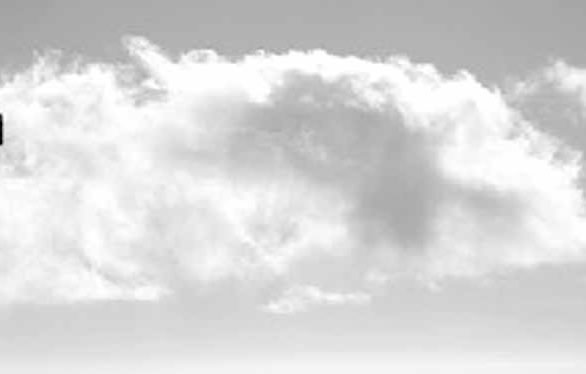
Finalists celebrate at the Awards ceremony on what was both Earth Day and Oceans Day.
Since the beginning of spring, students, teachers, and personnel from the Center for Marine Technology Studies (CETMar) No. 14, the Intercultural Center for Desert and Ocean Studies (CEDO), the local Ecology Club, and the Adair Bay Network of Wetland Collectives (REHBA) have been preparing to receive a very special guest in Puerto Peñasco.
The guest’s luggage includes clothing of such a brilliant white and elegant black that it doesn’t seem designed to last four months on the beach, but rather for performing an elegant dance in white and black. For this guest, the occasion deserves its best plumage since it will looking for someone very special, the “love of its life,” as experts describe her. Other than that, this guest is not too demanding and doesn’t require anything luxurious, just a comfortable spot in the sand close to the tranquil waters of the Sea of Cortés where it can establish its territory without human interference or predators.
Its scientific name is Sternula antillarum, but it’s better known as the Least Tern.
As soon as the sun’s first rays, marking a tranquil mid-spring morning, arrive at the mouth of the Morúa Estuary, they are shattered by the sudden cacophony created by the early awakening of this little gull.
Contrasted with this is the stealthy steps of teachers, and students from CETMarand personnel from CEDO whobusily assemble the telescopes that will allow them to observe the behavior and reproductive success of the Least Ternduring its reproductive season that begins in April and ends in July.
de una de sus áreas de reproducción en la región de La Paz, B.C.S”) found that reproductive failures in birds are due to human impact in nesting areas.
Because of this finding, students, teachers and personnel from CEDO have built barriers using tires and placed public notices in the nesting areas. They want to insure that these areas, where the colony has as many as 20-25 nests, are carefully enclosed, marked, and free from danger. They have also distributed leaflets in both English and Spanish about the species.
Once settled in, this lovely migratory bird moves about purposefully in search of food, taking advantage of the coolest early morning hours in the Sonoran Desert. It must be in great shape for the courtship.
Colonies of this species are also found in coastal California, Baja California, Baja California Sur, and Sonora. The bird is known as the Least Tern in English because it’s the smallest of the gulls and measures just 8.5 inches long. It is protected by the Mexican environmental law NOM-059 ECOL-2001 because it faces human competition for space in coastal zones. Whenever houses or developments are built near the shore, the species is challenged.
In the 1980s and 1990s, three researchers, Anamaría Escofet, Frank B. Gill, and Eduardo Palacios, along with other colleagues, showed that deterioration of coastal habitats can cause populations to collapse in this group of birds. Further, the Least Ternis very sensitive to noise and its eggs or chicks are exposed to predators or to being squashed by humans.
Renato Mendoza and colleagues, in a master’s thesis titled “Nesting of the Least Tern (Sterna antillarium browni) and Management of One of its Nesting Areas in the La Paz, BCS Region” (original: “Anidación del Gallito Marino Californiano [Sterna antillarum browni] y manejo
Special Treatment for Puerto Peñasco Guest
Other organizations are contributing recycled materials and helping to monitor nesting sites in order for the species’ breeding season to be successful. Collaborators include: the municipal administration through its Public Services and Sanitation Services departments, as well as the Federal Public Maritime Security Zone, and the local Naval Military Division.
On June 10th, 2011, researchers and conservationists celebrated the anniversary of the federal decree that established several of the most prominent nature reserves in northwestern Mexico.
"We're celebrating the 18th anniversary of this decree," said the Intercultural Center for the Study of Deserts and Oceans (CEDO), congratulating staff from CONANP (the National Commission for Protected Natural Areas) at the Pinacate y Gran Desierto de Altar and the Upper Gulf of California and Colorado River Delta Biosphere Reserves.
"Conserving these ecosystems has not been easy, and many people have dedicated their lives and efforts towards maintaining the balance of this bit of land," acknowledged CEDO, an educational institution whose headquarters are located in Puerto Peñasco. Mexico has 174 federally protected natural areas, which include more than 62, 727,251 acres. The country has 41 biosphere reserves, three of which are in the state of Sonora. "Today’s events remind of us how important it is to keep our ecosystems in balance; and it is precisely by creating Protected Natural Areas that we can have instruments of environmental policy that carry stronger legal weight for preserving biodiversity," said CEDO in its official communiqué to the public.

Finalists celebrate at the Awards ceremony on what was both Earth Day and Oceans Day.
 The Biosphere Reserves Alto Golfo de California and the Upper Colorado River Delta Delta both celebrate their founding. (Photo: Manuel Villanueva)
The Biosphere Reserves Alto Golfo de California and the Upper Colorado River Delta Delta both celebrate their founding. (Photo: Manuel Villanueva)In its 17th year, the environmental contest “Fishing for the Future”, organized by the Intercultural Center for the Study of Deserts and Oceans (CEDO) in Puerto Peñasco, included for the first time participation by the students of El Desemboque, Ejido Campodónico and Ejido Oribe de Alba in Sonora as well as those from San Felipe in Baja California. The awards ceremony celebrated on June 11 also marked Earth Day and Oceans Day.
In response to the alarming statistics that show a drastic reduction in the world’s fisheries and environmental damage caused by those same fisheries, the 2011 contest focused on the search for options that will lead us to create a sustainable fishery in northwestern Mexico.
JOSÉ RAFAEL CAMPOY FAVELA
Director of the Upper Gulf of California Biosphere Reserve in Sonora, Mexico, who died in March 2011; a great loss to the scientific community and his many colleages in the desert, ecosystems ecology and fisheries. To learn more about Professor Godoy, please visit this page.
To find out how to make a donation to the family in honor of M. Campoy, write to CEDO at:info@cedointercultural.org